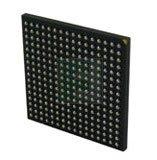
AMD Xilinx
XC2C512-6FTG256C
XC2C512-6FTG256C ECAD Model
XC2C512-6FTG256C Attributes
| Type | Description | Select |
|---|---|---|
| Rohs Code | Yes | |
| Part Life Cycle Code | Obsolete | |
| Supply Voltage-Nom | 1.8 V | |
| Propagation Delay | 6 ns | |
| Number of Macro Cells | 512 | |
| Number of I/O Lines | 212 | |
| Programmable Logic Type | FLASH PLD | |
| Temperature Grade | COMMERCIAL | |
| Package Shape | SQUARE | |
| Technology | CMOS | |
| Organization | 0 DEDICATED INPUTS, 212 I/O | |
| Additional Feature | YES | |
| In-System Programmable | YES | |
| JTAG BST | YES | |
| Output Function | MACROCELL | |
| Power Supplies | 1.5/3.3,1.8 V | |
| Supply Voltage-Max | 1.9 V | |
| Supply Voltage-Min | 1.7 V | |
| JESD-30 Code | S-PBGA-B256 | |
| Qualification Status | Not Qualified | |
| JESD-609 Code | e1 | |
| Moisture Sensitivity Level | 3 | |
| Operating Temperature-Max | 70 °C | |
| Peak Reflow Temperature (Cel) | 260 | |
| Time@Peak Reflow Temperature-Max (s) | 30 | |
| Number of Terminals | 256 | |
| Package Body Material | PLASTIC/EPOXY | |
| Package Code | LBGA | |
| Package Equivalence Code | BGA256,16X16,40 | |
| Package Shape | SQUARE | |
| Package Style | GRID ARRAY, LOW PROFILE | |
| Surface Mount | YES | |
| Terminal Finish | TIN SILVER COPPER | |
| Terminal Form | BALL | |
| Terminal Pitch | 1 mm | |
| Terminal Position | BOTTOM | |
| Width | 17 mm | |
| Length | 17 mm | |
| Seated Height-Max | 1.55 mm | |
| Ihs Manufacturer | XILINX INC | |
| Part Package Code | BGA | |
| Package Description | LBGA, BGA256,16X16,40 | |
| Pin Count | 256 | |
| Reach Compliance Code | compliant | |
| ECCN Code | 3A991.D | |
| HTS Code | 8542.39.00.01 |
XC2C512-6FTG256C Datasheet Download
XC2C512-6FTG256C Overview
The XC2C512-6FTG256C chip model is an advanced, high-performance digital signal processing solution designed for embedded processing, image processing, and other applications. It is based on the Xilinx Spartan-6 FPGA family, which is equipped with a range of features that make it suitable for a wide range of applications. The chip model is designed to be used with the HDL language, which is a high-level language that allows developers to quickly and easily create complex designs.
The original design intention of the XC2C512-6FTG256C chip model was to provide a high-performance solution for digital signal processing and embedded processing applications. The chip model is designed to be highly scalable, allowing for future upgrades and modifications. It is also capable of being used in advanced communication systems, thanks to its flexibility and scalability.
The product description of the XC2C512-6FTG256C chip model includes the following features: a Xilinx Spartan-6 FPGA family, a range of I/O pins, integrated memory, and a range of configurable logic blocks. The chip model also has a range of design features, such as clock management, power management, and debug capabilities. In addition, the chip model is also equipped with a range of on-chip peripherals, such as timers, counters, and analog-to-digital converters.
When designing with the XC2C512-6FTG256C chip model, there are a few key considerations that must be taken into account. First, the chip model is designed to be used with the HDL language, which requires a certain level of expertise. Second, the chip model is highly scalable, so the design must be able to accommodate future upgrades and modifications. Third, the chip model is designed for high-performance applications, so the design must be able to handle the data throughput and processing requirements.
In order to gain a better understanding of the XC2C512-6FTG256C chip model, it is recommended to look at case studies that have used the chip model in their designs. These case studies can provide valuable insights into the design process and can also provide useful tips and tricks for using the chip model. In addition, it is important to pay attention to any warnings or precautions that may be provided by the manufacturer when using the chip model.
In conclusion, the XC2C512-6FTG256C chip model is a powerful and highly scalable solution for digital signal processing and embedded processing applications. It is designed to be used with the HDL language and is capable of being used in advanced communication systems. When designing with the chip model, it is important to take into account the design considerations, as well as any warnings or precautions provided by the manufacturer. By taking these steps, designers can ensure that they are getting the most out of the chip model.
You May Also Be Interested In
2,499 In Stock
Pricing (USD)
| QTY | Unit Price | Ext Price |
|---|---|---|
| No reference price found. | ||

